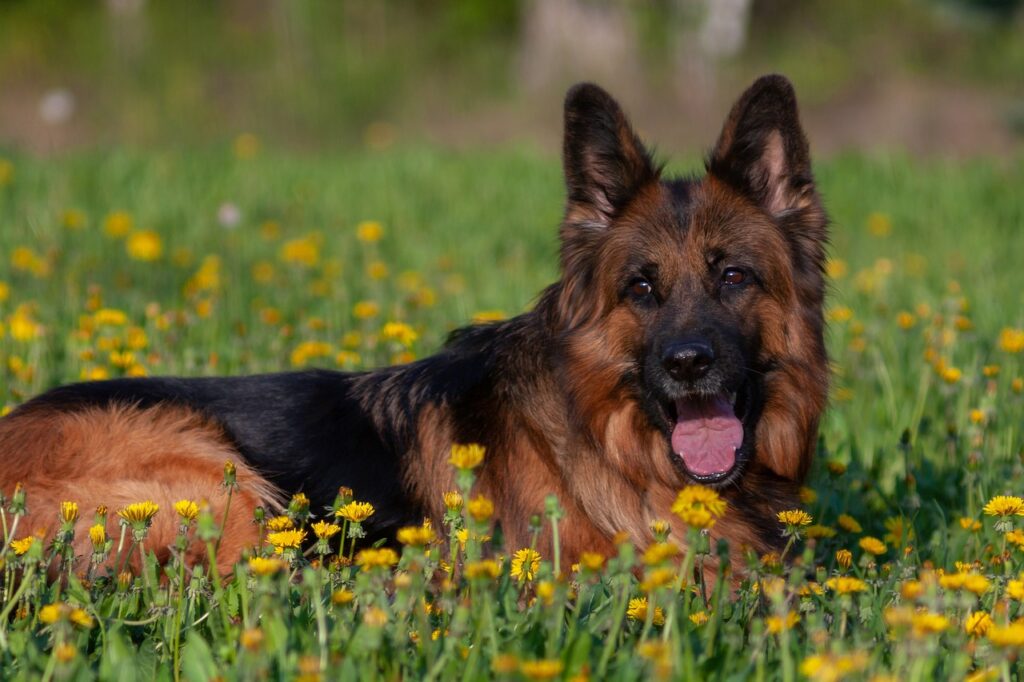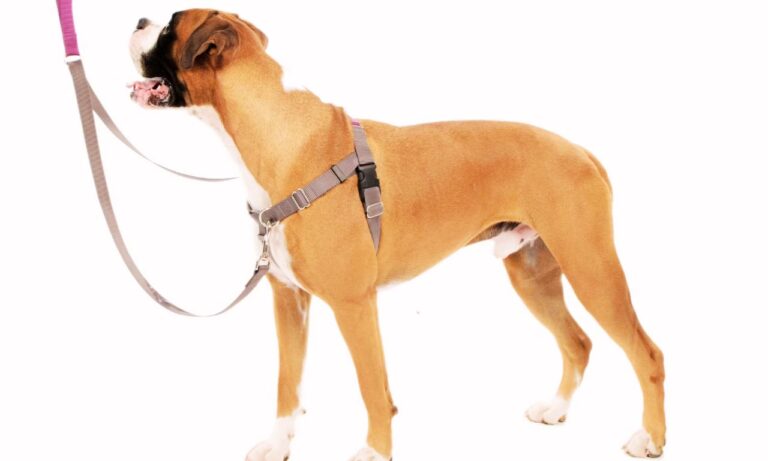| Summary: A male German Shepherd typically lives 9 to 13 years, depending on genetics, lifestyle, and health care. Factors like hip dysplasia, diet, and physical activity greatly influence longevity. Neutering may also reduce some health risks. Regular vet visits and proper training contribute to a longer, healthier life for males. |
German Shepherds are among the most loyal, intelligent, and hardworking dogs globally. Male German Shepherds, in particular, are known for their robust physique, courage, and devotion to their families. When considering adopting or caring for a male German Shepherd, one of the most common concerns is understanding a German shepherd lifespan male—how long he might live and what factors could influence his longevity.
Male German Shepherds typically live between 9 to 13 years, depending on genetics and lifestyle. GPS dog collars keep them safe and track their outdoor activities.
I will explore the average life expectancy of male German Shepherds, factors that affect their lifespan, and actionable steps you can take to extend and improve the quality of life for your furry companion. To find the perfect fit, learn more about what size collar for a Bichon, ensuring your dog’s comfort and safety.
Blog Highlights
ToggleAverage German Shepherd Lifespan Male
Male German Shepherds typically live between 9 to 13 years, depending on their genetics, diet, exercise, and medical care. While some may reach the age of 14 or 15, that is considered above-average and often results from a mix of good genes, attentive owners, and consistent veterinary support.

Here’s a lifespan breakdown based on various conditions:
| Care Level | Life Expectancy (Years) |
| Exceptional care + genetics | 12–14 |
| Average home + diet | 10–12 |
| Poor health management | 7–10 |
Males tend to be slightly larger than females, and this size difference—along with a higher tendency for hip and joint issues—can sometimes lower their longevity compared to females. However, with proper care, male German Shepherds can enjoy full, active lives well into their senior years.
Hip dysplasia and degenerative myelopathy are common concerns, so early health screening is vital. Pet tech products can monitor mobility and dietary needs.
Size and Physical Maturity of Male German Shepherds
Understanding your dog’s physical development helps in estimating how his body will cope with aging.
- Height: Adult males stand between 24 to 26 inches (60–65 cm) at the shoulder.
- Weight: Healthy adult males weigh between 65 to 90 pounds (29–41 kg).
- Growth Completion: Full physical maturity occurs around 18–24 months, but mental maturity may take up to 3 years.

Larger dogs generally age faster due to their metabolic load and joint wear. This is why weight management is vital in extending the lifespan of large breeds like the German Shepherd. Discover the ideal option by exploring what is the best collar material for a Bichon Frise to ensure your pet’s comfort and durability.
Factors Affecting the Lifespan of Male German Shepherds
Numerous factors play a role in determining how long your male German Shepherd will live. Below, we break them down into the most impactful categories:

1. Genetics and Breeding Quality
The genetic health of your dog is one of the most significant predictors of lifespan. A male German Shepherd from a reputable breeder with health-tested parents has a much better chance of living a long and healthy life.
Key inherited conditions include:
- Hip Dysplasia: Affects 20–25% of German Shepherds.
- Degenerative Myelopathy: Common in aging Shepherds after age 8–10.
- Panosteitis: Bone inflammation that may affect growing pups.
- Elbow Dysplasia: Another joint-related condition, especially in males due to weight.
Ethical breeders screen for these conditions and avoid breeding dogs with chronic issues. Avoid puppy mills or backyard breeders to reduce the risk of hereditary health problems.
2. Diet and Nutrition
Diet is directly linked to health, and consequently, to lifespan. A well-fed German Shepherd can live 1–3 years longer than one with poor dietary habits.
Nutritional facts to know:
Daily Caloric Needs:
- Puppy (2–12 months): 1500–2500 kcal/day
- Adult (2–7 years): 1300–2000 kcal/day
- Senior (7+ years): 1000–1600 kcal/day
Macronutrient Guidelines:
- Protein: 22–30%
- Fat: 12–18%
- Fiber: 4–5%
High-quality kibble or raw food diets enriched with glucosamine, omega-3 fatty acids, and antioxidants can significantly reduce the impact of aging and improve joint health, particularly in males who carry more weight. Proper training, joint care, and moderate exercise extend a German Shepherd’s lifespan. Electronic dog collars aid in consistent behavioral guidance.
3. Exercise and Physical Activity
German Shepherds are extremely energetic and intelligent. Lack of physical stimulation can not only cause behavioral problems but also lead to obesity and early onset of diseases like arthritis and heart problems.

- Daily Exercise Recommendation: 90–120 minutes
- Types of Exercise: Long walks, running, swimming, obedience training, and agility sports.
Working dogs who remain physically and mentally engaged tend to live longer and healthier lives. Senior dogs should continue light exercise to maintain muscle tone and cardiovascular health.
4. Veterinary Care and Preventative Health
Regular check-ups and vaccinations ensure early detection of issues like heartworm, cancer, and arthritis—three major killers in senior dogs.
Recommended schedule:
- Puppies: Vaccinations every 3–4 weeks until 16 weeks old.
- Adults: Yearly health exams and vaccines.
- Seniors (7+ years): Bi-annual check-ups.
Annual blood tests, dental cleanings, and parasite preventatives also contribute to a longer lifespan. Dogs that receive preventative care live 10–15% longer than those who don’t.
5. Neutering and Reproductive Health
Neutering a male German Shepherd has both pros and cons in terms of lifespan:
Benefits:
- Reduces risk of testicular cancer.
- May reduce aggressive behaviors.
- Lowers roaming tendencies and injury risk.
Risks:
If done too early (before 1 year), may increase risk of joint disorders.
Best practice: Neuter around 12–18 months, once the growth plates have closed. Speak with a vet to determine the best timing based on your dog’s development. The American Staffordshire Terrier’s coat type is short, sleek, and easy to maintain with regular brushing.
Common Health Issues in Male German Shepherds
While they are generally healthy, male German Shepherds are predisposed to some conditions more than others, especially in later years. Here’s a table of common health issues and their average age of onset:

| Condition | Typical Onset (Years) | Effect on Lifespan |
| Hip Dysplasia | 1–3 | Chronic, can reduce lifespan |
| Degenerative Myelopathy | 8–10 | Progressive, lifespan drops by 1–2 years |
| Arthritis | 6–10 | Reduces quality of life if unmanaged |
| Gastric Dilatation Volvulus (Bloat) | 5–12 | Life-threatening if untreated |
| Cancer (Hemangiosarcoma) | 7–12 | Fatal if not caught early |
Early detection and management can drastically improve outcomes. For instance, arthritis treated with supplements and weight control might not affect lifespan, while untreated bloat can be fatal in hours.
How to Increase the Lifespan of a Male German Shepherd
Want your dog to reach 13 or 14 years? It’s possible with consistent attention and a healthy environment.
1. Invest in Nutrition
Feed breed-specific or large-breed formulas with joint support additives like glucosamine and chondroitin.
2. Maintain an Ideal Weight
Obesity cuts life expectancy by up to 2.5 years. Keep your German Shepherd lean—visible waistline, ribs not prominent but felt easily.
3. Mental Stimulation
Engage your dog with:
- Puzzle toys
- Obedience training
- Nose work or scent tracking
Mental engagement reduces stress and helps prevent cognitive decline, common in dogs after age 8.
4. Routine Health Checks
Schedule twice-a-year check-ups after age 7. Early detection of organ dysfunction or tumors can extend life by several years.
5. Safe Environment
Avoid toxic foods (like grapes, chocolate), keep walkways slip-free for older dogs, and provide orthopedic beds for joint support. The best collar size for an American Staffordshire Terrier ensures a comfortable and secure fit for your dog during walks and training.
Milestone Guide for a Male German Shepherd’s Life
Here’s a year-by-year overview of what to expect:
| Age | Life Stage | Focus |
| 0–1 | Puppy | Growth, socialization, vaccinations |
| 1–3 | Young Adult | Training, peak physical activity |
| 4–6 | Mature Adult | Monitor joints, increase vet visits |
| 7–9 | Senior | Adjust diet, light exercise, vet care |
| 10–13 | Elder | Monitor for age-related diseases |
With each phase, your care strategy must evolve. Aging dogs need tailored food, less intense activity, and more comfort. A high-protein diet, regular check-ups, and mental stimulation are essential for long-term health. Dog training equipment supports obedience and physical well-being.
Conclusion
The average german shepherd lifespan male is 9–13 years, but many live longer with optimal care. Genetics play a vital role, but so does what you do as an owner—your choices in diet, healthcare, activity, and environment can add years to your dog’s life.
For a step-by-step guide on how to wear collar to an Affenpinscher, check out this detailed article to ensure a comfortable and secure fit for your dog.
To help your male German Shepherd thrive into his teens, focus on preventative care, maintain a healthy lifestyle, and give him all the love and attention he deserves. A well-cared-for German Shepherd is not only a loyal companion but a long-living one.





